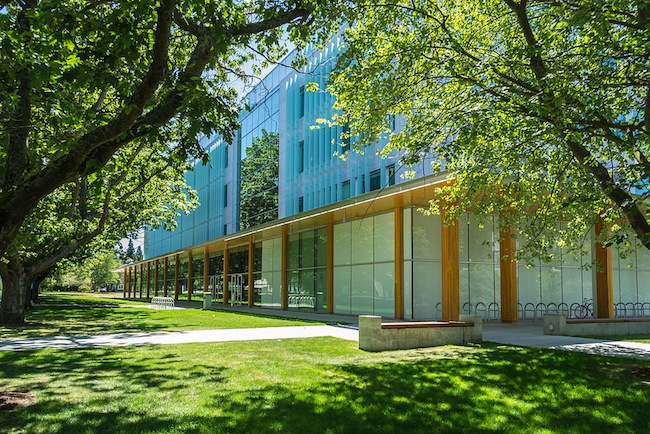The wood-industry advocacy group reThink Wood has released "Summary Report: Survey of International Tall Wood Buildings." Conducted by Perkins + Will for Forestry Innovation Investment and the Binational Softwood Lumber Council, the free report summarizes stakeholder experiences with 10 built projects in Europe, Australia, and Canada, including commercial, residential, mixed-use, and institutional facilities of five to 10 stories.
In particular, the report stresses characteristics of owners and Building Teams that are necessary for success in building tall with wood, including a high level of initial commitment, planning, collaboration, and holistic innovation.
Stakeholders are usually motivated by a desire for innovation, market leadership, and carbon reduction, with dual objectives of energy efficiency and healthy indoor environments. The existence of supportive government policies was an important factor in the acceptance of mass timber solutions for many of the profiled projects.
The report also acknowledges the need for additional refinements to allow timber to become a common solution for tall buildings. Issues and strategies for technical challenges are discussed, including the topics of structure, lateral stability, fire protection, acoustics + vibration, systems integration, moisture protection, and durability.
Click here for a complete report download.
Related Stories
| Feb 1, 2012
New ways to work with wood
New products like cross-laminated timber are spurring interest in wood as a structural material.
| Feb 1, 2012
Blackney Hayes designs school for students with learning differences
The 63,500 sf building allows AIM to consolidate its previous two locations under one roof, with room to expand in the future.
| Feb 1, 2012
Two new research buildings dedicated at the University of South Carolina
The two buildings add 208,000 square feet of collaborative research space to the campus.
| Feb 1, 2012
List of Top 10 States for LEED Green Buildings released?
USGBC releases list of top U.S. states for LEED-certified projects in 2011.
| Feb 1, 2012
ULI and Greenprint Foundation create ULI Greenprint Center for Building Performance
Member-to-member information exchange measures energy use, carbon footprint of commercial portfolios.
| Feb 1, 2012
AEC mergers and acquisitions up in 2011, expected to surge in 2012
Morrissey Goodale tracked 171 domestic M&A deals, representing a 12.5% increase over 2010 and a return to levels not seen since 2007.
| Jan 31, 2012
AIA CONTINUING EDUCATION: Reroofing primer, in-depth advice from the experts
Earn 1.0 AIA/CES learning units by studying this article and successfully completing the online exam.
| Jan 31, 2012
28th Annual Reconstruction Awards: Modern day reconstruction plays out
A savvy Building Team reconstructs a Boston landmark into a multiuse masterpiece for Suffolk University.
| Jan 31, 2012
Chapman Construction/Design: ‘Sustainability is part of everything we do’
Chapman Construction/Design builds a working culture around sustainability—for its clients, and for its employees.
| Jan 31, 2012
Fusion Facilities: 8 reasons to consolidate multiple functions under one roof
‘Fusing’ multiple functions into a single building can make it greater than the sum of its parts. The first in a series on the design and construction of university facilities.

















